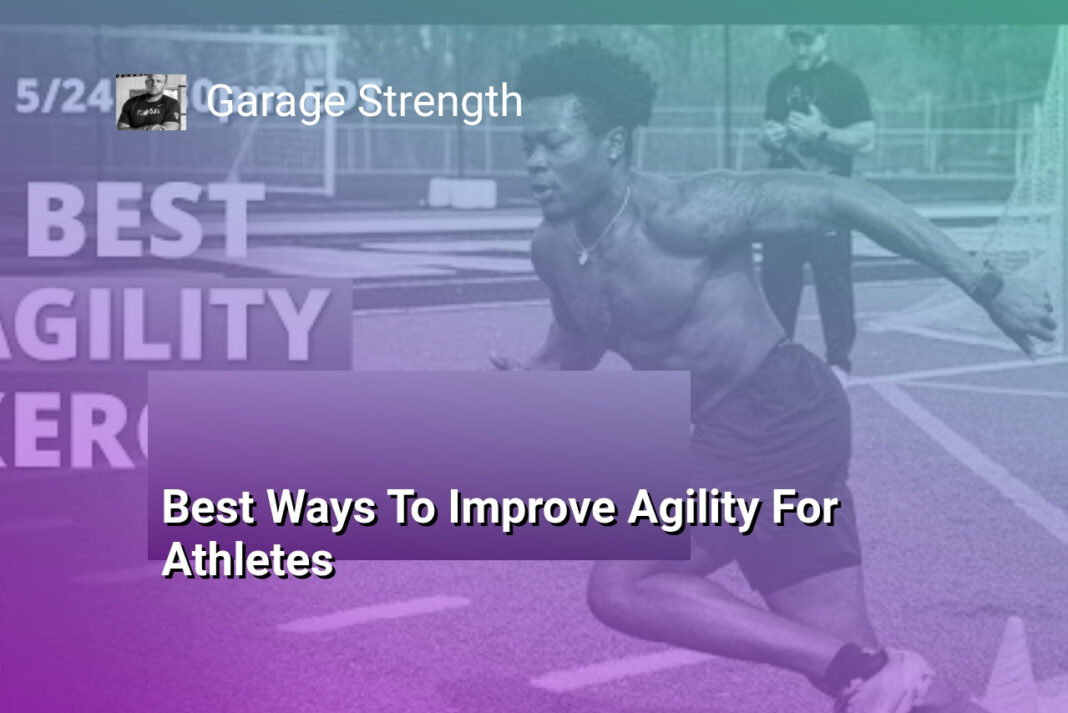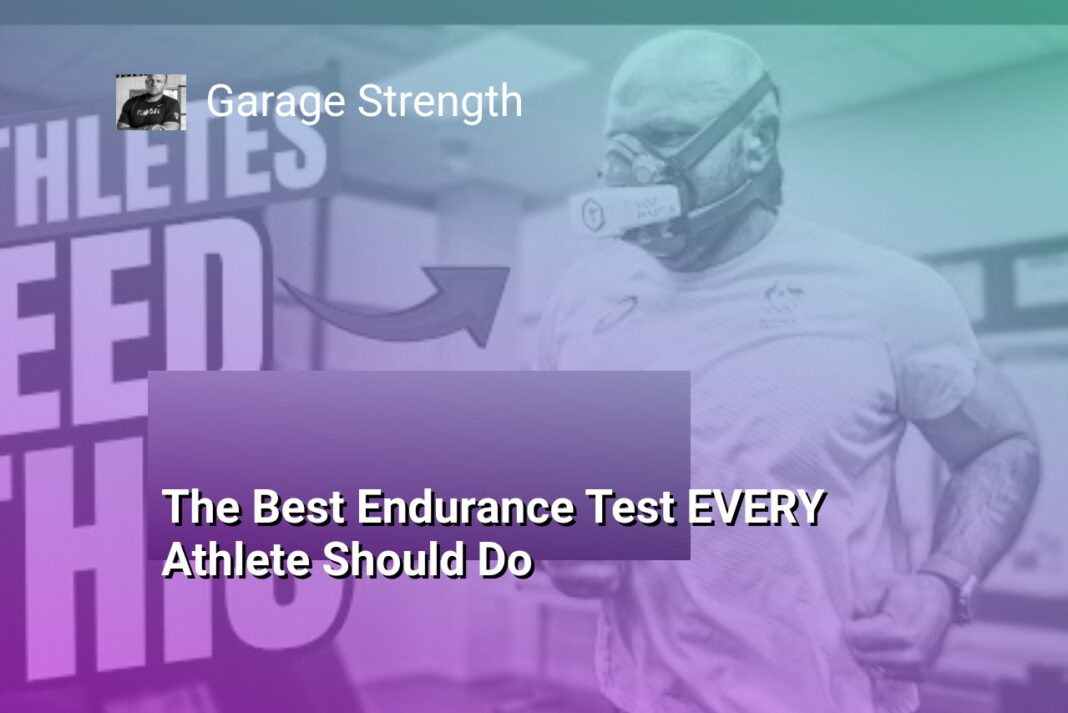The Bottom Line:
- As an athlete, I understand the importance of improving agility to enhance sports performance. The key is to assess the athlete’s current level, whether they are a beginner, intermediate, or advanced, and tailor the training accordingly.
- For novice athletes, the low-hanging fruit for improving agility is to focus on building maximum strength through exercises like squats, lunges, and single-leg exercises. This foundational strength will translate directly to better agility.
- As athletes progress, the agility training needs to evolve. This may involve incorporating more specific exercises like stair jumps, single-leg jumps, and hurdle hops to challenge their agility and coordination.
- Establishing clear benchmarks and deliverables that directly transfer to the athlete’s sport is crucial. This allows them to see the progress they are making and stay motivated on their journey.
- The amount of time dedicated to agility training should be based on the athlete’s sport and their specific needs. Power-based athletes may only require 5-10% of their training time for agility, while more locomotion-heavy sports like running back or safety may need 20-25% of their training focused on agility and change of direction.
Assessing the Athlete’s Career Stage
Tailoring Agility Training to the Athlete’s Career Stage
When optimizing agility training for athletes, it’s crucial to consider their current career stage and level of experience. This approach ensures that the training program is tailored to their specific needs and abilities, maximizing the effectiveness of the interventions.
Assessing the Novice or Intermediate Athlete
For athletes who are considered novice or intermediate in their respective sports, the primary focus should be on developing their maximal strength. Improving the athlete’s back squat, front squat, single-leg squat, and weighted lunges can have a significant impact on their agility. This is because the foundation of agility is rooted in lower-body strength and power. By prioritizing these fundamental strength-building exercises, the athlete can see tangible improvements in their agility-related movements.
Progressing the Advanced Athlete
As athletes progress and become more advanced in their careers, the training approach must evolve to address their specific needs. At this stage, the focus shifts from pure strength development to more sport-specific agility training. This may include exercises such as stair jumps, single-leg jumps into hurdle hops, and bound sequences. These higher-intensity, dynamic movements challenge the athlete’s ability to change direction, accelerate, and decelerate, which are critical components of agility.
By carefully assessing the athlete’s career stage and tailoring the agility training accordingly, coaches can ensure that the interventions are effective and aligned with the athlete’s current level of development. This holistic approach, considering both the athlete’s experience and the specific demands of their sport, is essential for optimizing agility and enhancing overall athletic performance.
The Importance of Strength Training for Agility
Maximizing Agility Through Strength Training
Strength training plays a pivotal role in enhancing an athlete’s agility. By developing greater muscular strength, athletes can generate more force and power, which directly translates to improved acceleration, change of direction, and overall agility performance.
The Foundation of Agility: Muscular Strength
Foundational strength exercises, such as squats, deadlifts, and lunges, are the bedrock of an effective agility training program. These compound movements target the major muscle groups responsible for explosive movements, including the quadriceps, hamstrings, and glutes. As an athlete’s strength in these areas increases, their ability to rapidly change direction, accelerate, and decelerate also improves.
Tailoring Strength Training to Specific Sport Demands
The specific strength training regimen should be tailored to the demands of the athlete’s sport. For example, a sprinter may benefit more from single-leg exercises and plyometric training to enhance lateral agility, while a football lineman may require a greater emphasis on total-body strength to generate power and withstand collisions. By aligning the strength training program with the unique agility requirements of the sport, athletes can maximize the transfer of strength gains to improved on-field performance.
By prioritizing strength training as a foundational component of an agility development program, athletes can build a robust physical foundation that enables them to execute rapid, precise, and powerful movements on the field or court. This holistic approach to agility optimization ensures that athletes are well-equipped to excel in the dynamic, high-intensity demands of their sport.
Defining Agility Training Based on Experience and Age
Tailoring Agility Training to Athlete Experience and Age
When it comes to optimizing agility training for athletes, it’s crucial to consider their experience level and age. The approach to agility development can vary significantly depending on where the athlete is in their career and physical maturation.
Novice and Intermediate Athletes
For novice or intermediate-level athletes, the primary focus should be on building a solid foundation of strength. Exercises like back squats, front squats, single-leg squats, and weighted lunges can significantly improve an athlete’s agility, as these movements directly target the key muscle groups involved in change of direction and explosive movements. This low-hanging fruit of strength development is often the most efficient way to enhance agility for younger or less experienced athletes.
Advanced Athletes
As athletes progress and become more advanced, the approach to agility training must evolve. While strength development remains important, other factors, such as movement patterns, coordination, and sport-specific demands, become increasingly crucial. Advanced agility training may involve more complex exercises, such as stair jumps, single-leg jumps with hurdle hops and bounds, and sport-specific drills that challenge the athlete’s ability to change direction, accelerate, and decelerate.
The key is to tailor the agility training program to the athlete’s current abilities, sport demands, and stage of development. By understanding the athlete’s experience level and age, coaches can design agility training programs that effectively address their needs and help them reach their full potential.
Establishing Measurable Benchmarks for Agility Improvement
Tailoring Agility Training to Athlete Profiles
When it comes to optimizing athlete agility, it’s crucial to establish measurable benchmarks that align with the specific demands of each sport. By understanding the unique physical requirements and movement patterns of different athletic disciplines, coaches can design targeted agility training programs that cater to the individual needs of their athletes.
Assessing Baseline Agility Levels
The first step in this process is to assess the baseline agility levels of the athletes. This can be done through a series of standardized tests and drills that evaluate various aspects of agility, such as change of direction, reaction time, and multi-directional movement. By establishing these initial benchmarks, coaches can track progress and identify areas for improvement over time.
Developing Sport-Specific Agility Metrics
Once the baseline agility levels have been established, coaches can work to develop sport-specific agility metrics that align with the demands of the athlete’s discipline. For example, a shot putter may require less emphasis on lateral agility compared to a soccer player, who needs to excel in quick changes of direction and multi-directional movements. By tailoring the agility training to the specific needs of the sport, coaches can ensure that the improvements made in the gym or on the field directly translate to enhanced performance on the competition stage.
By implementing this comprehensive approach to agility optimization, coaches can empower their athletes to reach new heights of athletic excellence, unlocking their full potential through targeted, measurable, and sport-specific training strategies.
Tailoring Agility Programs to Different Sport Demands
Tailoring Agility Programs to Different Sport Demands
When designing agility training programs, it’s crucial to consider the specific demands of the sport and the athlete’s level of experience. For beginner or novice athletes, the primary focus should be on developing a strong foundation through maximal strength training. Exercises like back squats, front squats, and weighted lunges can significantly improve an athlete’s agility, as increased strength directly translates to better movement mechanics and control.
As athletes progress and become more advanced, the agility training approach needs to evolve. For sports that require a higher degree of locomotion, such as running backs or safeties, agility training should account for 20-25% of the overall training time. This includes a focus on acceleration, top speed, and change of direction drills. On the other hand, for power-based athletes like shot putters, agility training may only make up 5-10% of their training, as excessive locomotion may not transfer as effectively to their sport-specific demands.
For sports that fall in the middle of the spectrum, such as wrestling or combat athletics, the agility training approach should strike a balance between the two extremes. These athletes require a blend of speed, power, and agility to succeed, so the training program should reflect this by allocating a significant portion of time to agility-focused exercises and drills.
By understanding the unique demands of each sport and the athlete’s current level of development, coaches can tailor their agility training programs to optimize performance and minimize the risk of injury. Establishing clear benchmarks and measurable outcomes for these training modalities is also crucial, as it allows athletes to track their progress and stay motivated throughout the training process.





